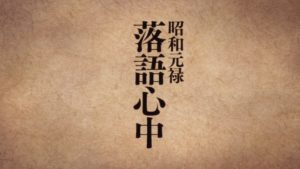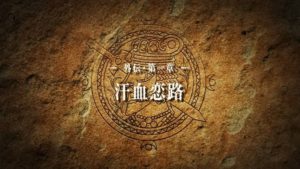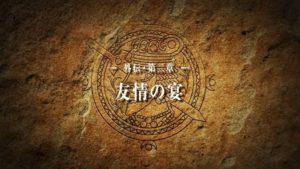With Tyranny just around the corner, and most of the characters I made in Titan Quest having completed Normal difficulty, it seems it’s time for a progress update. I’ll list the characters in the order I beat Hades with them (with one exception).
The Oracle ended up preforming much as expected. Most enemies ended up quickly cut down by a flood of Ternion blasts before they could do anything. It’s a bit of a glass cannon though and doesn’t do too well against close-quarter AOE attacks (I died a bunch against Cerberus due to non-existent poison resistance). Lightning Bolt is also a really good skill and I think I may try to max it as a back-up attack.
The Templar actually ended up being the weakest character for much of the game. It wasn’t until Act IV that the combination of high defenses and high enemy damage resulted in opponents killing themselves in droves, before that point it was a real slog. I wouldn’t suggest trying this sort of build unless you’re prepared for a tedious and somewhat frustrating early game.
Next is a character made mainly based on wanting to use the Spell Breaker skill, although having someone who could use +Cold equipment was another consideration. Enter the Sage. Spell Breaker is curious. Most skills in this game either start good and stay good, start off good and become lackluster, or are just plain lackluster for a particular build. This one however, initially unimpressive, ends up fantastic when maxed out in Acts III & IV. Tiger Elites? Dragonmen hordes? Demon elites? All instantly either wrecked or rendered effectively harmless. The only real weakness here is a lack of crowd control; Scatter Shot just doesn’t cut it in a non-Bleed build. I may have to try out Freezing Blast or Squall.
Here is a good time to point out that TitanCalc, the site I’ve been linking to for character builds, uses outdated skill descriptions; quite a number have been buffed/nerfed/changed since that was last updated. Scatter Shot for example no longer does a ton of piercing damage, it does a little piercing with a bunch of Bleeding. Some other notables included Earth’s Volatility increasing physical and burning damage in addition to fire, Dream’s Premonition being a flat increase instead a percentile, Rogue’s Lucky Hit having a 44% change to trigger, Warfare’s Onslaught granting ~half the damage bonus, and Spirit’s Circle of Power now increases Bleed/Vitality/Leech damage and casting speed while decreasing energy cost and recharge rate.
Getting back to the characters we come to the Harbinger, which is practically the best of all worlds. Tons of speed (Weapon Training, Ardor, Temporal Flux), tons of physical damage (Dual Wielding, Onslaught, Battle Standard), and tons of elemental damage (Temporal Rift). Give it two ‘of Reckless Power’ axes/maces enhanced with some +speed Anubis’ Wrath glyphs and watch it decimate everything in its path. The only notable weakness is a lack of Stun resistance, so make sure to keep an eye out for gear that enhances that.
Less impressive is the Warlock. Constructs and spectral Undead are the Warlock’s bane, and there are quite a number of the latter in the game. Disarm Traps more or less solves the Construct issue with its hefty damage bonus, but even with Spirit Ward/Bane Undead are still a problem (Deathchill, sensibly enough, turns out to be almost completely ineffective in this area). Lethal Strike certainly destroys them, but that’s only single target. It’s a conundrum. Maybe the elemental damage from maxing out the Lich’s Arcane Blast would be effective?
After the previous character I really needed to play one that didn’t have an issue with Undead. Enter the Summoner. With summon-enhancing +Elemental gear the Wolves and Nymph (set to ‘aggressive’), along with support from Volcanic Orb and Eruption, just ripped through them. Ripped through most things actually. The Core Dweller was less impressive, and spent most of the game set to ‘normal’ acting as something of a bodyguard to waylay any creatures that bypassed the Wolves. The character basically plays like a siege engine; you stand back and launch Orbs/Eruptions at enemies while your army of summons engage them. The main weakness of the build would have to be enemies that use un-dodgeable AOE attacks; those tend to wreck the Wolves… who obviously won’t physically move out of the way.
I made the Dreamkiller specifically to have a character that could benefit from Poison-focused gear. Sadly, it doesn’t really play differently enough from the earlier characters (e.g. Warlock, Templar) to grab my attention. So far I’ve left it sitting at the start of Act II Normal since it’s a real pain to kill spectral Undead (immune as they are to poison and the character build not yet having access to Temporal Rift)… which is mostly my fault for trying to max out early skills before unlocking the full Mastery trees. I may respec it a bit and transfer the points from Phantom Strike into advancing toward Rift.
Lastly we have the previously mentioned Diviner, who I’ve heavily re-specced to focus on Vitality damage. I decide to play through Epic with this character first after all and they ripped things up surprisingly well in Act I. Temporal Rift is insanely powerful and, combined with Trance of Wrath, easily handles the Undead/Constructs that are otherwise immune to Deathchill and the damage type I decided to focus on. The only thing I’ll say about Epic at this point is that it’s a lot like Normal, the main exceptions being: Enemies take longer to die, your base resistances take a huge hit, there’s a new class of equipment, summoned creatures become quite tough, and there are some new boss monsters scattered about.
I guess I’ll close this with some notes about Normal difficulty:
- Don’t worry about dying. The XP penalty is small and easily recovered.
- The difficulty spikes at points. Most notably: The Athens’ Catacombs boss, the start of Act III, the Act III boss, and the Demon archers in Act IV.
- Note that the area where you fight the Act III boss includes one of each Shrine variety.
- Life/Energy Leech isn’t very good, since the creature has to stay alive for you to actually leech anything.
- All Undead and Constructs are completely immune to Life Leech, Bleed/Vitality Damage, and Convert Damage to Health effects. Constructs and spectral Undead are also immune to Poison damage.
- Expected levels at the end of each Act, assuming no farming/grinding, are: 18-19, 27, 32-33, & 39-40.
- Don’t try to complete equipment sets with a single character. After going through the game with all the above characters, I’ve only managed to complete three of them (Templar, Fragile/Frail, and Obsidian).
- While at first blue gear will seem the best, keep a lookout for green gear. Since it can be enhanced with creature parts or glyphs it often ends up far better for specific builds.
- Summoned creatures aren’t updated in real-time, you have to re-summon them if you want them to use abilities gained from skills you just unlocked.





